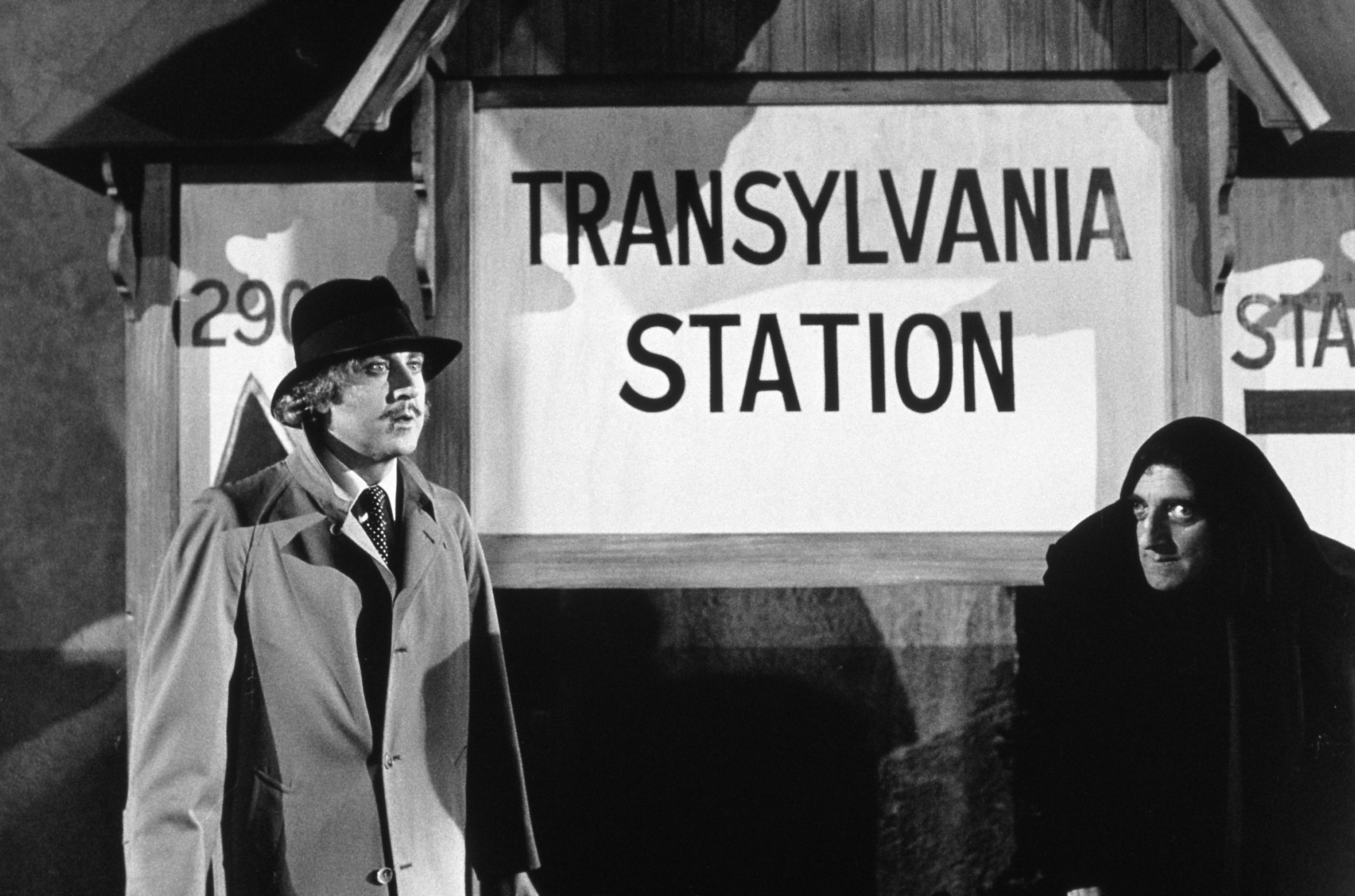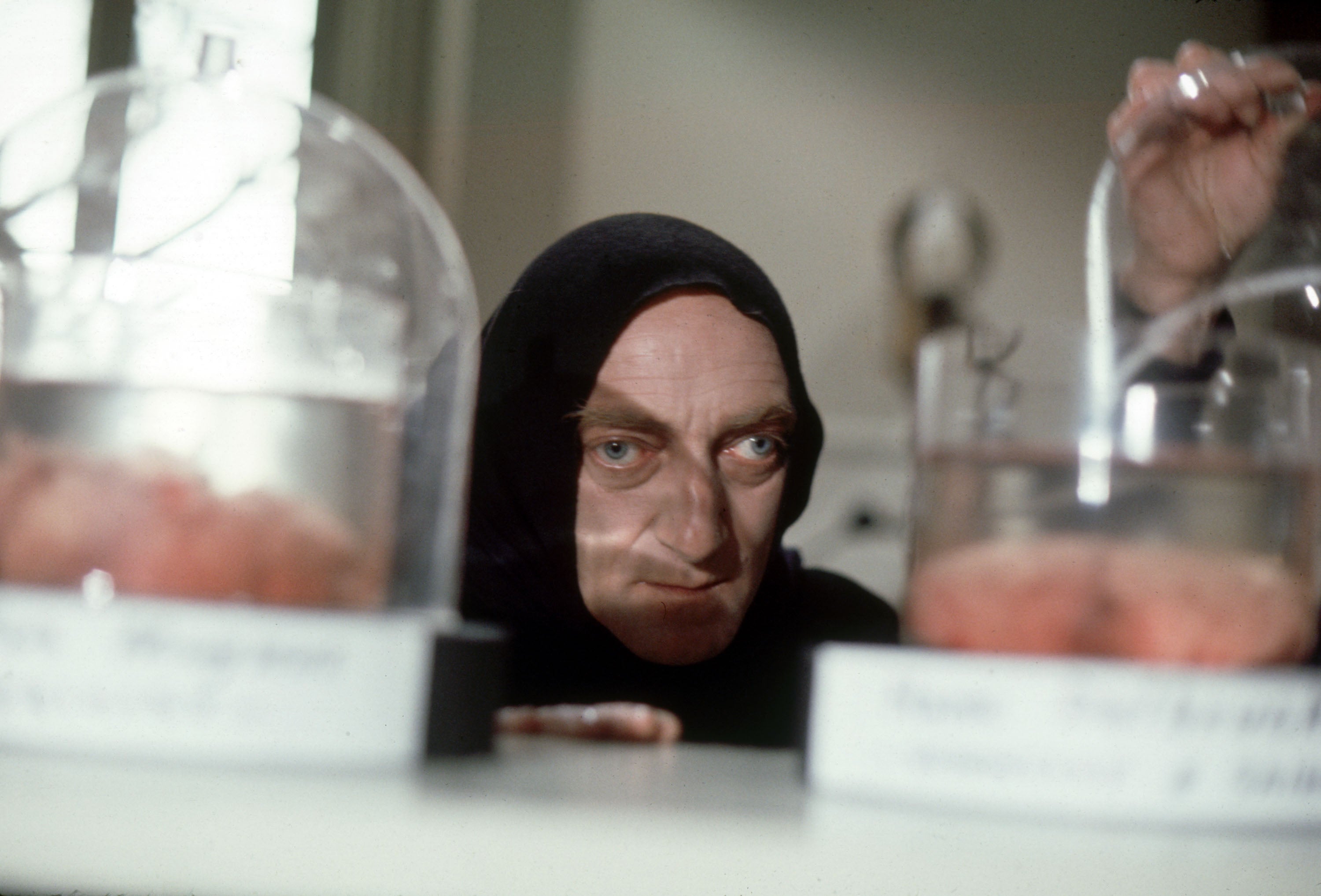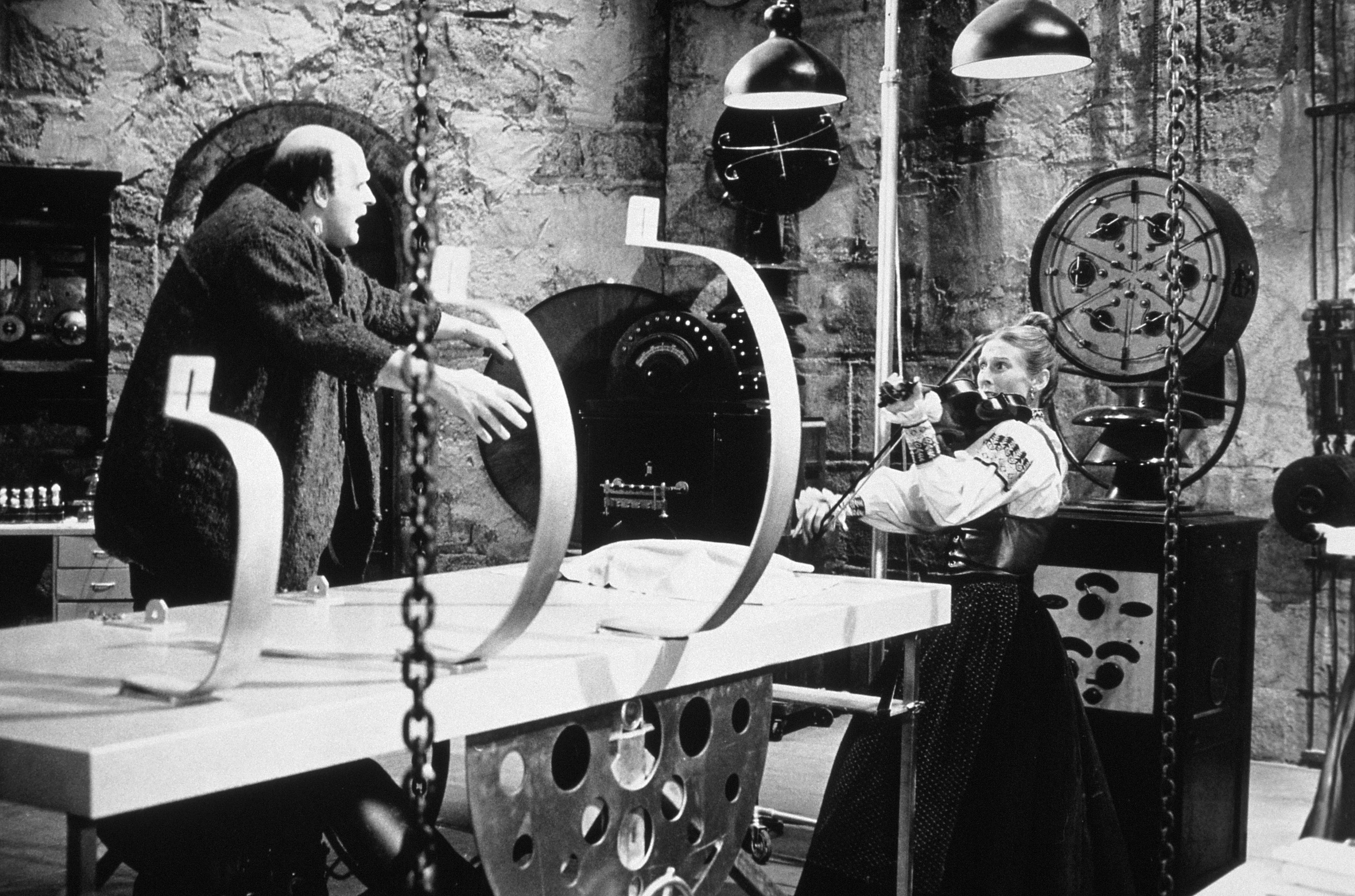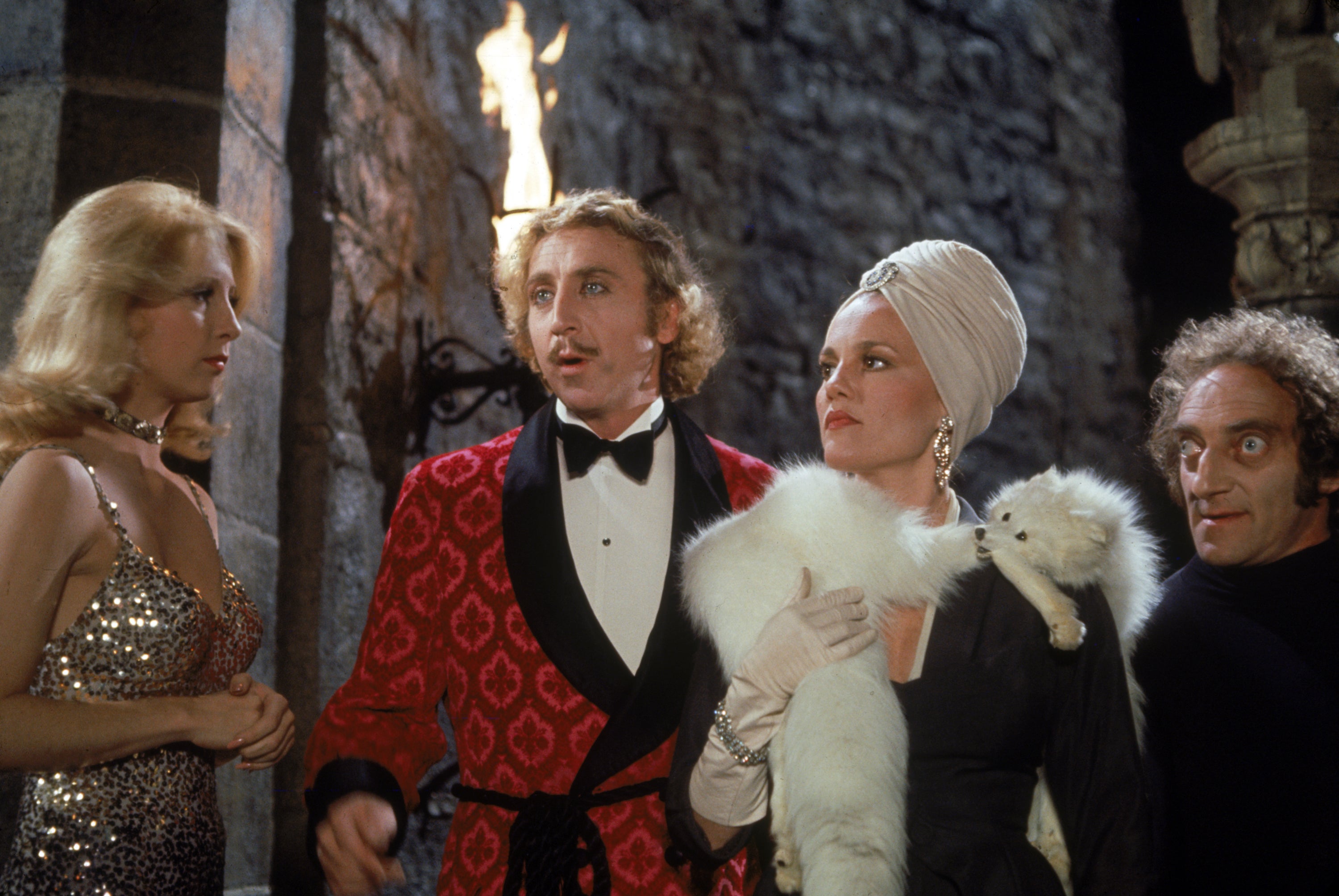How Young Frankenstein turned Mary Shelley’s literary classic into comedy gold
As Mel Brooks’s revisionist monster comedy turns 50, Geoffrey Macnab looks at the making and legacy of a truly exceptional ‘Frankenstein’ spoof

For Hollywood, Frankenstein is lifeless matter that can endlessly be reanimated. Over the last 100 years, there have been myriad Frankenstein adaptations, many of which have frazzled and mutated author Mary Shelley’s original vision beyond recognition. These include romances, cartoons and comedies as well as more conventional horror yarns. Everyone from Andy Warhol to Abbott and Costello has had a go at pulling the lever on their own monster movies.
Soon, audiences will have a chance to reacquaint themselves with one of the very best Frankenstein features. Mel Brooks’s Young Frankenstein (1974), back on screen this autumn to mark its 50th anniversary, was conceived as a comic spoof. It lampooned both Shelley’s 1818 novel – Frankenstein; or, the Modern Prometheus – and the Universal adaptations made by James Whale in the 1930s, which starred Boris Karloff as the monster with a bolt in his neck. The miracle, though, is that Young Frankenstein itself still feels so fresh.
After all, this didn’t seem a promising idea for a movie at all. Actor Gene Wilder, who had just starred in Brooks’s cowboy parody Blazing Saddles (1974), had a hankering to write and direct his own material. As he recounted in his 2006 autobiography, he rented a small house on the bay in Westhampton Beach, New York, and set to work on a screenplay, writing longhand with a felt tip pen.
He recalled: “At the top of the page, I wrote ‘Young Frankenstein, the Birth of a Monster’ and then wrote two pages of what might happen to me if I was the great-grandson of Beaufort von Frankenstein and was called to Transylvania because I had just inherited the Frankenstein estate.” From that flimsy beginning, the project slowly began to twitch and flicker into existence.
Wilder had known Brooks since acting opposite the filmmaker’s wife Anne Bancroft in a stage production of Bertolt Brecht’s Mother Courage in 1963. He had already starred in Brooks’s feature debut The Producers (1967) as well as in Blazing Saddles. Brooks, meanwhile, regarded Wilder as a muse. He relished the way the Willy Wonka actor could be “sad and funny at the same time,” in the vein of Charlie Chaplin, and marvelled at his “radiant innocence”. It was true: even when performing the goofiest, filthiest and most subversive routines, Wilder somehow still always retained the expression of a choirboy.
When Wilder’s agent Mike Medavoy suggested Brooks as a potential director for Young Frankenstein, the actor was aghast. He was certain his old mentor wouldn’t want “to direct anything he hasn’t conceived himself”. Wilder, though, was wrong. Brooks leapt at the chance to make a monster movie. He didn’t even complain when Wilder asked for him not to act in the movie – out of a fear that his scene-stealing schtick would be too big a distraction.

The two men worked doggedly on the screenplay, bonding over cups of tea and digestive biscuits. The trick, they quickly decided, was to approach the project in deadly earnest. In the completed movie, Frankenstein and his monster are shown dancing in top hats and tails to Irving Berlin music. The script is full of old vaudeville gags bound to make audiences groan. (“Werewolf?” “There.”). It has crass jokes about big “knockers” that might have embarrassed Benny Hill or Russ Meyer. Absurdity reigns. Nonetheless, Young Frankenstein has the bones of a proper horror film too – literally, in fact. The filmmakers sourced real skulls to add some extra verisimilitude to the early scenes.
Brooks and Wilder took their research very seriously. They studied Shelley’s novel intently, and watched and re-watched Whale’s Frankenstein and Bride of Frankenstein. Both were determined to remain as faithful as possible to the “look and tempo” of those movies. “We saw how he took his time. Whale wanted everything to be dark and sombre,” Brooks later observed.
The plot follows Dr Frederick Frankenstein, a brilliant American academic deeply ashamed about his European ancestor Victor’s “kooky” experiments with reviving corpses. (To distinguish himself from his disreputable relative, he insists his own surname is pronounced “Fronkenshteen”). However, when he inherits the family’s estate in Transylvania, he is inevitably drawn into repeating exactly those experiments. (His bold vision of creating new life is undermined when his assistant brings him back the wrong brain, one that belonged to a certain Abby Normal.)

The film is far more restrained (and arguably far funnier as a result) than some of Brooks’s later, more scattergun movie spoofs (such feeble efforts as Dracula: Dead and Loving It and Robin Hood: Men in Tights). One key decision – that terrified the financiers – was to shoot in black and white.
There is nothing in Young Frankenstein’s opening credits – haunting violin music, lightning crackling, thunder rumbling and the slow zoom on a sinister, distant castle – to suggest this is a comedy at all. You have to wait at least two minutes for the first real laugh (courtesy of a skeleton playing up).
If the movie looks uncannily like the Boris Karloff pictures that inspired it, that is no accident. Brooks and his team had somehow tracked down the lab equipment used by Universal 40 years before in the Whale movies. This was all stored in the Santa Monica garage of Whale’s veteran production designer and electrical special effects creator, Kenneth Strickfaden. “Miraculously, it all still worked,” Brooks recalled of the contraptions and gizmos that provided those famous lightning zaps responsible for bringing Karloff back to life.

To avoid copyright infringement, the monster (very sweetly played by the hulking character actor Peter Boyle) wasn’t allowed a bolt – so they gave him a zip around his neck instead. Everything else was spot on, from the make-up to the beehive hairdo worn by one character late on – that perfectly matches Elsa Lanchester’s famous shock-haired coiffure in Bride of Frankenstein (1935).
Strangely, Young Frankenstein was far more faithful to the source material than the majority of other adaptations before or since. Admittedly, that fidelity isn’t immediately apparent when you’re first looking at comedian Marty Feldman’s moveable hump (which changes shoulders throughout the movie) and his huge bulbous eyes in his role as Frankenstein’s hunchback helper, Igor. Unlike Brooks, Shelley decided against writing a scene in which a blind old man (Gene Hackman) mistakes the monster’s thumb for a cigar and sets it alight. You won’t find any of those smutty jokes about the monster’s enormous schwanzschtücker in Shelley’s book either. Nonetheless, amid the banter, inanity, phallic references and relentless double entendres, Brooks’s comic classic includes almost all of the elements found in more traditional versions.
‘Young Frankenstein’ is by far my finest effort as a writer-director
Wilder’s romantic and dashing portrayal of the modern-day Frankenstein, with his wavy Albert Einstein hair, hasn’t dated in the slightest. Nor has the comic brilliance of actors like Cloris Leachman (the sinister but still sensual Frau Blücher, named after the Prussian victor at Waterloo), Teri Garr (Inga, the voluptuous Transylvanian maid who likes rolling in the hay); Kenneth Mars (showing Peter Sellers-like virtuosity as a thickset police inspector with an impenetrable Teutonic accent, an artificial arm and a monocle over his blind eye) and Madeline Kahn (as the ermine-draped fiancee Elizabeth who takes quite a shine to the monster).
Some elements of the film will rankle with contemporary viewers. Its sexual politics are problematic. Scenes like Boyle’s monster seemingly about to rape Elizabeth (who then breaks into orgasmic operatic arias after they have had sex seven times in a row), or of Dr Frederick casually bedding his assistant Inga wouldn’t have been played so confidently for laughs today.
Nonetheless, this is a film that continually wrong-foots you with its gentleness and its ingenuity. One of the best moments comes just when you expect the monster is about to kill the little girl. Instead, he sits on the see-saw and his enormous weight catapults her high into the air and safely back into her own bed.

Wilder and Brooks aren’t afraid of abstract ideas. During the brilliant early classroom sequence, Wilder’s Frankenstein explains the distinction between reflexive and voluntary nerve impulses in very lucid fashion by kicking an old man in the testicles.
There could hardly be a better moment for Young Frankenstein to be sparked back into new cinematic life. Monster mania is again on the rise; a first edition of Shelley’s novel sold at auction in Texas earlier this summer for an astonishing $843,000 (£650,000). Two new rival Frankenstein movies are currently being assembled. Guillermo Del Toro’s Netflix adaptation stars Euphoria’s Jacob Elordi as the monster and Oscar Isaac as Victor Frankenstein, while Maggie Gyllenhaal’s The Bride! has Christian Bale as the creature and Jessie Buckley as his mate.
Brooks, who turned 98 last month, called Young Frankenstein “by far his finest effort as a writer-director”. The genius of The Producers and Blazing Saddles aside, it’s hard to quibble with his assessment. This monster mash-up is so lively that it makes most other Frankenstein movies look moribund by comparison.
‘Young Frankenstein’ is re-released on 4 October






Join our commenting forum
Join thought-provoking conversations, follow other Independent readers and see their replies
Comments